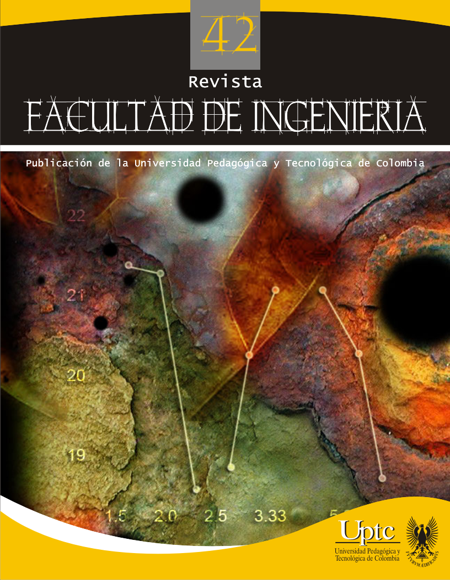Fuel efficiency effect on car buying choice

Abstract
The results of a research to study the fuel efficiency effect in acquiring a new vehicle are presented. The methodology is based on applying a stated preference survey in the context of a choice experiment with two unlabeled alternatives, which are characterized by the car cost and fuel efficiency.
Based on the data collected, a Multinomial Logit model was estimated, which allowed to study different choice scenarios. On average, it was found that individuals are willing to pay up to 1.020.000 Colombian pesos by a new vehicle which improves fuel efficiency at 1 kilometer/gallon. This value may be useful as reference for the automotive industry in the effort to produce higher performance vehicles.
Keywords
automotive Market, fuel Efficiency, stated-preference surveys, willingness to pay
References
- C. S Jones and S. P. Mayfield, “Algae biofuels: versatility for the future of bioenergy”, Current Opinion in Biotechnology, vol. 23 (3), pp. 346-351, Jun. 2012. DOI: http://dx.doi.org/10.1016/j.copbio.2011.10.013. DOI: https://doi.org/10.1016/j.copbio.2011.10.013
- V. K. Gupta and M. G. Tuohy, Biofuel technologies: recent developments. Berlin: Springer Berlin Heidelberg, 2013. DOI: https://doi.org/10.1007/978-3-642-34519-7
- B. Lin and C. Xie, “Estimation on oil demand and oil saving potential of China’s road transport sector”, Energy Policy, vol. 61, pp. 472-482, Oct. 2013. DOI: http://dx.doi.org/10.1016/j.enpol.2013.06.017. DOI: https://doi.org/10.1016/j.enpol.2013.06.017
- B. Rajesh Kumar and S. Saravanan, “Use of higher alcohol biofuels in diesel engines: A review”, Renewable and Sustainable Energy Reviews, vol. 60, pp. 84-115, Jul. 2016. DOI: http://dx.doi.org/10.1016/j.rser.2016.01.085. DOI: https://doi.org/10.1016/j.rser.2016.01.085
- J. Ahn, G. Jeong and Y. Kim, “A forecast of household ownership and use of alternative fuel vehicles: A multiple discrete-continuous choice approach”, Energy Economics, vol. 30 (5), pp. 2091-2104, Sep. 2008. DOI: http://dx.doi.org/10.1016/j.eneco.2007.10.003. DOI: https://doi.org/10.1016/j.eneco.2007.10.003
- C. Erdem, I. Sentürk and T. Simsek, “Identifying the factors affecting the willingness to pay for fuel-efficient vehicles in Turkey: a case of hybrids”, Energy Policy, vol. 38 (6), pp. 3038-3043, Jun. 2010. DOI: http://dx.doi.org/10.1016/j.enpol.2010.01.043. DOI: https://doi.org/10.1016/j.enpol.2010.01.043
- T. Sakaguchi, “Influence of diffusion of fuelefficient motor vehicles on gasoline demand for individual user owned passenger cars”, Energy Policy, vol. 28 (12), pp. 895-903, Oct. 2000. DOI: http://dx.doi.org/10.1016/S0301-4215(00)00071-9. DOI: https://doi.org/10.1016/S0301-4215(00)00071-9
- D. Brownstone, D. S. Bunch and K. Train, “Joint mixed logit models of stated and revealed preferences for alternative-fuel vehicles”, Transportation Research Part B: Methodological, vol. 34 (5), pp. 315-338. Jun. 2000. DOI: http://dx.doi.org/10.1016/S0191-2615(99)00031-4. DOI: https://doi.org/10.1016/S0191-2615(99)00031-4
- T. S. Turrentine and K. S. Kurani, “Car buyers and fuel economy?”, Energy Policy, vol. 35 (2), pp. 1213-1223. Feb. 2007. DOI: http://dx.doi.org/10.1016/j.enpol.2006.03.005. DOI: https://doi.org/10.1016/j.enpol.2006.03.005
- J. J. Soto, V. Cantillo and J. Arellana, “ Modelación híbrida para la elección de vehículos con energías alternativas”, Interciencia, vol. 39 (9), pp. 666-672. Sep. 2014.
- K. Train, Discrete choice methods with simulation. United Kingdom: Cambridge University Press, 2003. DOI: http://dx.doi.org/10.1017/CBO9780511753930. DOI: https://doi.org/10.1017/CBO9780511753930
- A. Orro, “Modelos de elección discreta en transportes con coeficientes aleatorios”. Tesis de doctorado, Facultad de Ingeniería Civil, Universidad de la Coruña, Coruña, España, 2005.
- J. J. Louviere, R. J. Meyer, D. S. Bunch et al., “Combining Sources of Preference Data for Modeling Complex Decision Processes”, Marketing Letters, vol. 10 (3), pp. 205-217, Aug. 1999. DOI: http://dx.doi.org/10.1023/A:1008050215270. DOI: https://doi.org/10.1023/A:1008050215270
- D. Kahneman, “Maps of bounded rationality, prize lecture”. In: T. Frängsmyr (ed), Les Prix Nobel: The Nobel Prizes 2002. Stockholm: Nobel Foundation, 2003.
- J. Bates, “History of demand modelling”. In: D. A. Hensher and K. J. Button (ed), Handbook of transport modelling, pp. 11-33. Amsterdam: DOI: https://doi.org/10.1108/9780857245670-002
- Pergamon, 2000.
- M. Ben-Akiva and S. R. Lerman, Discrete choice analysis, theory and application to travel demand. Cambridge, Massachusetts: The MIT Press, 1985.
- J. D. Ortúzar and L. G. Willumsen, Modelling transport. Chichester: John Wiley & Sons, 2011. DOI: https://doi.org/10.1002/9781119993308
- J. Téllez, M. Hernández, M. C. Llanes et al., Situación automotriz Colombia. Bogotá: BBVA Research, 2012.
- G. Koçur, T. Adler, W. Hyman and E. Audet, Guide to Forecasting Travel Demand with Direct Utility Measurement. Washington D.C.: USA Department of Transportation, 1982.
- L. Márquez, L. A. Gallo and C. A. Chacón, “Influence of Parking Costs on the Use of Cars in Bogota”, Ing. Univ. Bogotá, vol. 15 (1), pp. 105-124, Jan. – Jun. 2011.
- M. Bierlaire, “A free package for the estimation of discrete choice models”, Proceedings of the 3rd Swiss Transportation Research Conference, Ascona, Switzerland, 2003.
- M. Espey, “Do Consumers Value Fuel Economy?”, Regulation, Winter 2005-2006, pp. 8-10, 2006.
- P. S. McCarthy and R. S. Tay, “New vehicle consumption and fuel efficiency: A nested Logit approach”, Transportation Research Part E: Logistics and Transportation Review, vol. 34 (1), pp. 39-51, Mar. 1998. DOI: http://dx.doi.org/10.1016/S1366-5545(97)00042-2. DOI: https://doi.org/10.1016/S1366-5545(97)00042-2